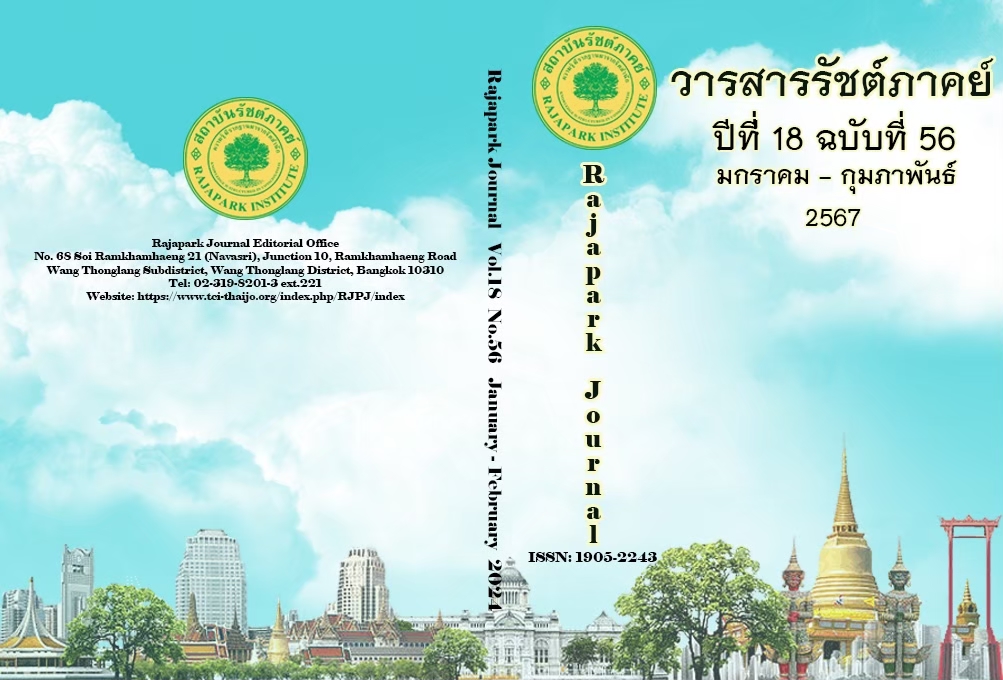Educational Supervision Model of Supervisor, Samutprakan Primary Educational Service Area Office 1 to Thailand 4.0
Main Article Content
Abstract
This research aimed to develop an educational supervision model for the supervisor, Samutprakan Primary Educational Service Area Office 1 in Thailand 4.0, using mixed-method research (quantitative and qualitative) by doing 3 steps: 1) to study the current conditions of the educational supervision model of supervisors in Thailand. 4.0 Using a questionnaire to collect data from a sample of 388 school administrators and teachers and guidelines for the educational supervision model of a supervisor in Thailand 4.0 by interviewing 9 experts using a structured interview form, 2) to develop and evaluate an educational supervision model for supervisors in Samutprakan Primary Educational Service Area Office 1 in Thailand. 4.0 by 5 experts using evaluation forms; 3) the trial and evaluation of the possibility and utility of a model by 24 from Watkhusrang School; and 388 from school administrators and teachers. The statistics of the data analysis were mean, standard deviation, and content analysis.
The results of the research were as follows: 1) the current conditions of the educational supervision model were found to be high levels and guidelines for educational supervision in five aspects. 2) The educational supervision model of the supervisor, Samutprakan Primary Educational Service Area Office 1 in Thailand 4.0 consisted of two components: 1. Education in Thailand 4.0 consists of 1.1 curriculum development and 1.2 learning management innovation. 1.3 teacher development, 1.4 measurement and evaluation, and 1.5 education quality assurance 2. The Education Communication Process in Thailand 4.0 consists of 6 steps: setting goals for communication, planning and design methodologies, media management, technology and innovation, communication operations, reflection, and evaluation of the accuracy and suitability of a model at the highest level overall. 3) The trial and evaluation of the possibility and utility of the educational supervision model found that, overall, it was at the highest level.
Article Details

This work is licensed under a Creative Commons Attribution-NonCommercial-NoDerivatives 4.0 International License.
Views and opinions appearing in the Journal it is the responsibility of the author of the article, and does not constitute the view and responsibility of the editorial team.
References
Anannawee, P., & Prawatrungruang, S. (2023). A Model of Digital Leadership of School Administrators in Schools Administration, The Secondary Educational Service Area Office Chonburi Rayong. Journal of Social Science and Cultural, 7(4), 250-268.
https://so06.tci-thaijo.org/index.php/JSC/article/view/263553
Chonburapan, P. (2017). A Model of Instructional Supervision for Enhancing Ability in Developing Thinking Skills of the Students in Basic Education Level. Department of Education Management: Collage of Education Sciences, Dhurakij Pundit University.
Chularut, J. (2018). Learning Management for Students in the Thailand 4.0 Era. Veridian E-Journal, Silpakorn University, 11(2), 2363-2379. https://he02.tci-thaijo.org/index.php/Veridian-E-Journal/article/view/144570
DiPaola, M. F., & Hoy, W.K. (2013). Principals Improving Instruction: Supervision, Evaluation, and Professional Development. Information Age Publishing.
Inkongngam, B., Chuanchom, S., Chitchirachan, C., & Chaisuwan, S. (2018). The Development of Internal supervision in Instructional Research of Primary Education Office Teachers of 15th Provincial Supervisory Network. Journal of Nakhonratchasima College, 12(1), 34-46.
Kaewsud, W. et al. (2018). Development of PPDER Communication Model to Improve Learning Management Active Learning that focuses on the PLC process for small schools. the secondary educational service area office 20. (Research report). Office of the Basic Education Commission. Ministry of Education. http://www.ska2.go.th/reis/data/research/25620912_073649_1116.pdf
Khenpho, A. (2019). The Development Supervision Model to Enhance Learning Management Competency in Primary Schools[Doctoral dissertation, Mahasarakham University].
Krejcie, R.V., & Morgan, D.W. (1970). Determining Sample Size for Research Activities. Education and Psychological Measurement, 30(3), 607-610.
Lekavipat, M. (2020). Crystallize one's 30 years of life supervisor from principles, theory to practice. Lert Paisal Karnpim.
Ministry of Education. (2019). Analysis of Thai Education in the 21st Century World. Office of the Education Council.
Nillapun, M. (2010). Research Methodology in Education (9th ed.). Faculty of Education, Silpakorn University.
Office of the Basic Education Commission, Educational Supervision Unit. (2021). The science and art of educational supervision. Educational Supervision Unit.
Panich, V. (2017). The Path to quality education in Thailand era 4.0. In In The 4th National Symposium on Education 2017. Faculty of Education, Vongchavalitkul University.
Suwanrak, K. (2019). The instructional supervision in 4.0 era. Leadership course. Faculty of Education, Bansomdejchaopraya Rajabhat University.
Thailand Development Research Institute (TDRI). (2013). Economic direction of Thailand 2013. Documentation of the seminar. TDRI.
Thammasa, K., & Namwan, T. (2022). The Development of Guidelines for Internal Supervision in Education Era 4.0 of Schools under the Secondary Educational Service Area Office Buriram. Academic Journal of Mahamakut Buddhist University Roi Et Campus, 11(2), 621-633.
Ungkanawin, K., & Pachanavan, A. (2019). Educational Supervision to Progress to Thailand 4.0. Journal of Suvarnabhumi Institute of Technology (Humanities and Social Sciences), 4(1), 193-206.


